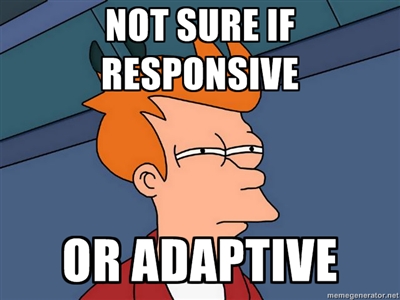What is the difference between Adaptive, Reactive and HTML5 Mobile Sites?

When you finally decide to take your company website mobile, there are three types of mobile websites to choose from. There are adaptive mobile sites, reactive mobile sites, and HTML5 mobile sites. All of these are responsive web designs which are built to provide the most favorable viewing experience possible for the end user. They provide the user with easy reading and navigation of the site on mobile devices while reducing the need to resize, pan, slide, and scroll while visiting you site.
The first type of mobile site is the responsive design. Responsive design is the use of media queries to serve different Cascading Style Sheets (CSS), allowing the site to change its appearance when viewed on different size screens. This can be accomplished with just plain HTML5 and CSS.
The second type of mobile site is the adaptive design. Adaptive design includes the CSS media queries of responsive design, but it adds Javascript based enhancements to change the site’s HTML markup based off the capabilities of the device. This is also called “progressive enhancement.”
An HTML5 mobile site, or HTML5 web app, is essentially a mobile website created in HTML5 using Jquery. The end result is a mobile site that looks like a native app, functions like a native app, and can even be saved to a smart phone with a Favicon on the home screen just like a native app, much like Facebook or Twitter.
Some say the HTML5 mobile web app could be the death of native apps. This is in large part due to the availability of 3G, 4G, and Wifi networks with high bandwidth and fast smart phone processors.
All these different types of sites are basically the same when seeing them from the point of view of the end user. The differences lie in the way they are set up and how they adapt or respond to each particular mobile device. With so many people today using smart phones, tablets, and mobile devices in general, it has become imperative for companies to go mobile, and these sites are the three best ways to do it.
For more information regarding adaptive, responsive, and HTML5 mobile sites, visit anchormobile.net.





